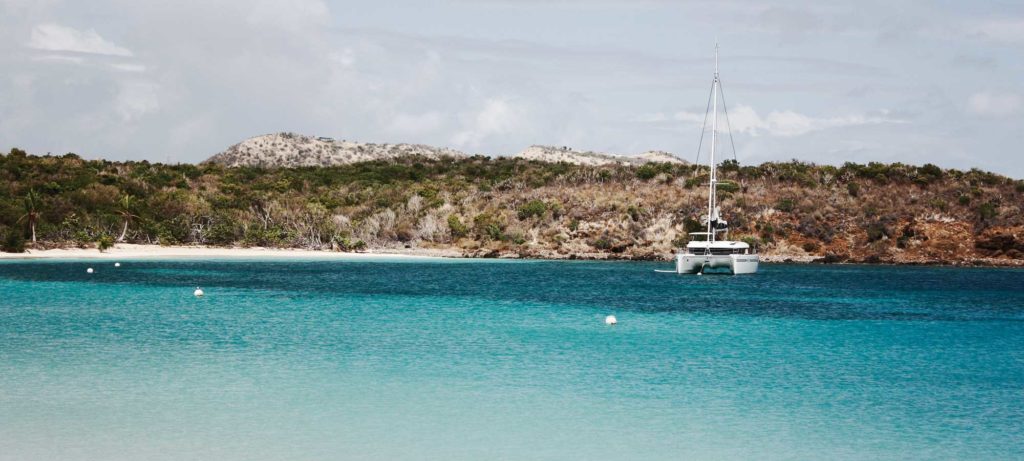
As our plane descended to land in San Juan, I twisted around in my aisle seat to see past my daughter, Lily, and a fellow sitting by the window, and was rewarded with a view of lush green hills, cloud-shrouded peaks and an insanely blue sea behind us. Welcome, then, to Puerto Rico.
Honestly, Lily and I had no idea what to expect when we boarded the plane at the crack of dawn on a late April Saturday morning in Boston, Massachusetts. Puerto Rico had been hit by Hurricane Maria a half year earlier, as had other islands in the northern Caribbean. Still, when my colleague Dave Gillespie and I ran into Sail Caribe Yacht Charters owner Jim Veiga during the Miami International Boat Show in February, he told us that life was actually getting back to normal. Storm damage had been extensive and repairs were ongoing, but the out islands and beaches were intact, stores were stocked and open, the trade winds still blew and his boats at Puerto del Rey Marina in Fajardo were in the water and ready to sail.
So that’s just what we were heading there to do, jump aboard a Sail Caribe catamaran and explore the Spanish Virgin Islands, arguably among America’s most overlooked gems. It would be my first real vacation in some time with Lily, who had recently finished grad school. She had a friend, Maddy, joining us, and Dave brought along his wife, Sandy, and their son, Andrew. Talk about an all-star crew.
Our plan was to meet at the San Juan airport, hop into a van sent from the marina and stop for provisions on the way to the charter base. Sandy had even worked out menus and a shopping list, though all for naught it turned out, after her and Dave’s flight was delayed for several hours. Whatever. Four of us found our ride and then winged it at the market, filling three carriages with supplies for the week. Meals might be unscripted, but no one was going to go hungry.
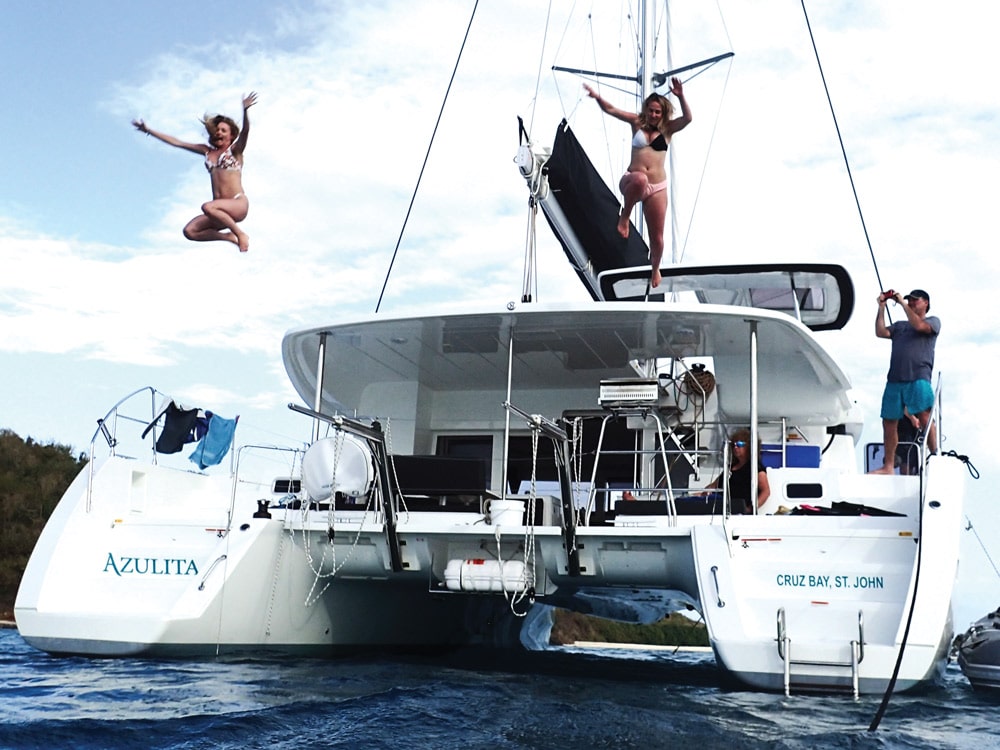
With 1,000 slips, storage racks ashore, and multiple on-site businesses, Marina del Rey is a sprawling complex, one of the largest in the Caribbean. Our van pulled into a loading area shortly after dark, where the driver corralled a couple of large metal carts for us to load. When we were ready, these were hitched onto a golf cart that delivered cargo and crew to Azulita, a 2018 Lagoon 450 tied up on the outer docks.
By the time we put away the food, stashed sea bags and had a cold can of Medalla Light in hand, Dave and Sandy arrived. After a welcome toast, we walked up the dock and grabbed dinner at La Cueva Del Mar, a waterside bar and restaurant that served up ample portions of live reggae and delicious fish tacos. The tropical night air was as sweet as the sound of tree frogs peeping along the shore.
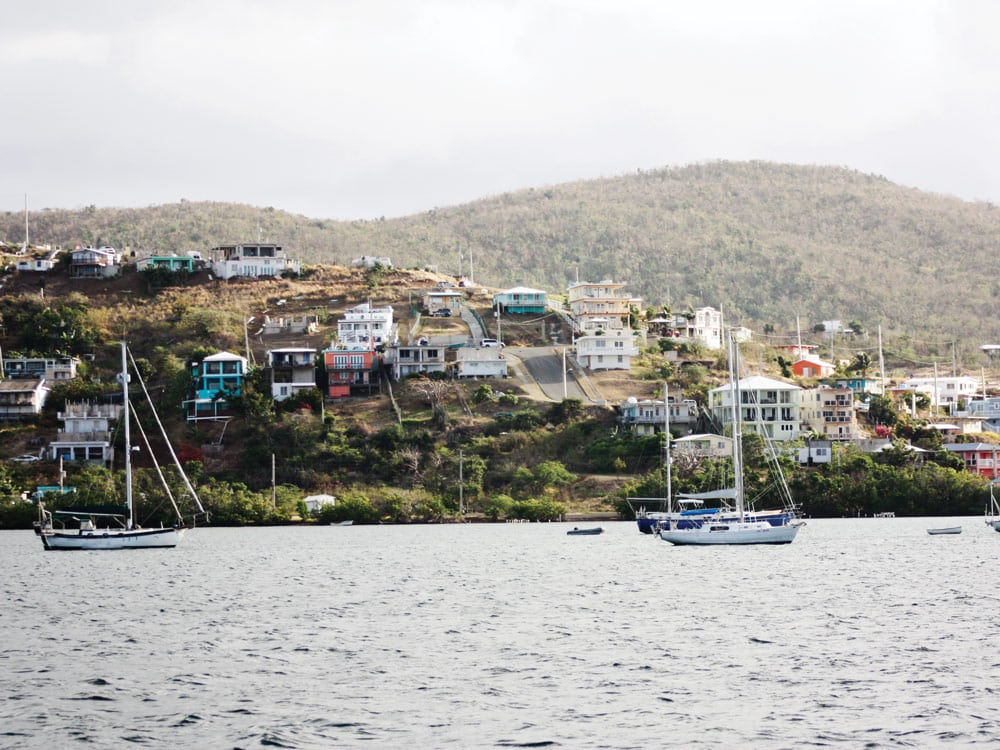
As promised at check in, Capt. Jose Bernard arrived Sunday morning and walked us through Azulita‘s many systems, including watermaker, air conditioning and genset. We went over the navigation and safety gear, the anchor and windlass, and then our attention turned to the charts. Capt. Bernard left no stone unturned.
Then, when it was time to go, the captain took the wheel and deftly slid Azulita out of its tight quarters (better him than me, I thought) and motored to the fuel dock across the channel. The last task was to raise and drop the main. Then, with a handshake, he departed and we were off. The channel out of the marina seemed narrow. Or maybe the Lagoon’s 25-foot 9-inch beam seemed wide. Either way, I took it slow, getting used to the boat and recalling the captain’s advice to favor the seawall as we turned the corner to head to sea. Abruptly, the breeze picked up and we in open water, the trade winds blowing in our face.
That night we were surrounded by dark hills to east. To the west, the twinkling lights on Puerto Rico were just lovely.
Given our afternoon departure and the fact that our anchorage for the night was 10 miles dead up wind, we decided that rather than starting our sailing vacation with a sail, we’d go motorboating instead. We found a relatively comfortable cruising rpm, but it was still a wet ride. The girls, with sunbathing on their minds, didn’t last long on the cushioned foredeck before they were soaked (and enjoying every minute of it) and back in the cockpit drying off.

We were headed to Punta Tamarindo on the west side of Culebra. Nearly all the marked anchorages around the islands have mooring balls. Officially, they are for day use only; unofficially, grab one and stay as long as you’d like. When we arrived at Tamarindo, we tied up to a ball on the north side of the point, well sheltered from the southeast wind and swell, and shared the anchorage with just one other boat.
Culebra is a mountainous island, and much of its west and north coast are undeveloped. That night we were surrounded by dark hills to east; to the west the twinkling lights on Puerto Rico were just lovely.
Monday morning, Dave and I took the dinghy ashore and found a dirt road that rose steeply into the hills. We hiked to the top of the first one and were rewarded by spectacular views of the deep blue ocean on one side and the lush green valleys of the island’s interior on the other. It was already hot, so back at the boat we dug out masks and fins, and everybody went for a swim. We’d been told the snorkeling was good on the point, but the current there was strong. Instead, Lily, Maddy and I swam back along the shore, where we spotted a few fish and a sea turtle. Mid morning, a tour boat full of snorkelers arrived, followed by a dive boat that anchored farther north along the shore. It was getting crowded! Time to go.
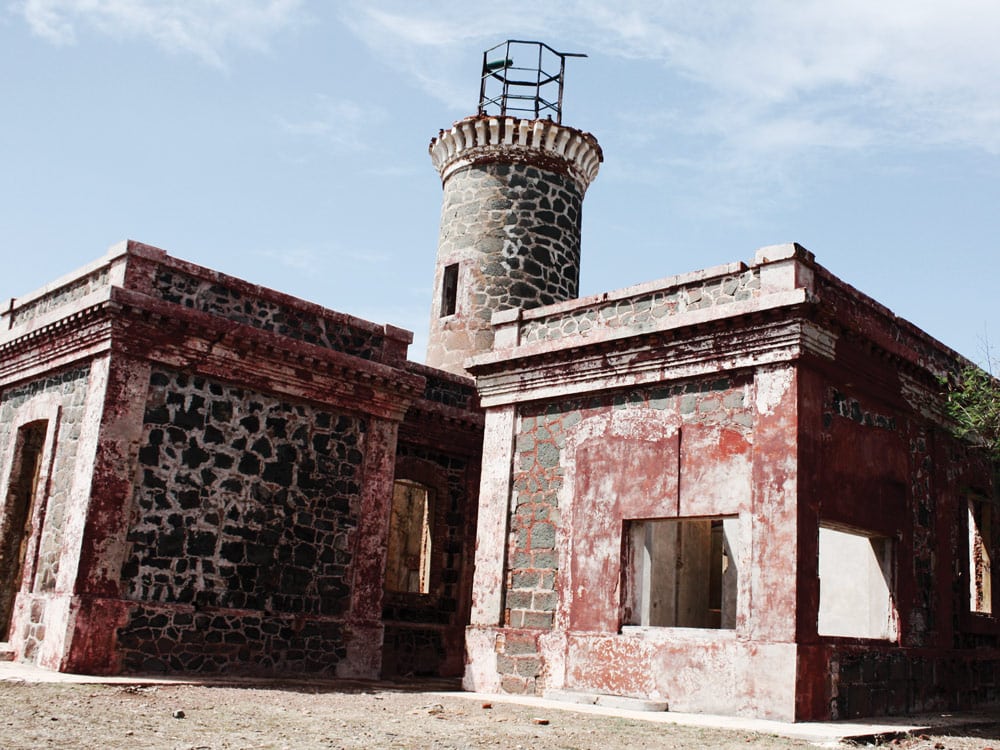
Flamenco Bay, on the north side of the island, has a spectacular beach that Dave and Sandy remembered from a previous trip. That was our next stop, right after another up-wind motorboat ride.
Culebra’s rocky coastline turned into a series of bays with white-sand beaches once we rounded the top of the island. Flamenco was one of the first we came to. Swells crashed onto the reefs on either side of the wide U-shaped cove as we entered, but the deeper in we went, the calmer it got. We anchored in about 15 feet of water, launched the dinghy and headed ashore. The beach was, indeed, stunning. At the eastern end there was a resort near where we waded ashore through the surf. There were a few people sunbathing, but most of the activity took place at the other end, where there was a picnic area with several shops selling food and drinks. Flamenco is not far from Dewey, the main town on Culebra, and it seemed a popular spot, even on a Monday afternoon.
From Flamenco, we motored in the center of the channel that runs between Culebra and Cayo Norte until we came to the pass through the reefs just outside the entrance to Bahia de Tortuga, the main anchorage on Culebrita.
The small island is a wildlife refuge, and undeveloped except for a few well-maintained trails and El Faro, an abandoned century-old light atop its highest hill, 300 feet above the water. On that afternoon, a couple of day boats sat bow to the beach, and three or four other sailboats were anchored or tied to moorings. We grabbed a mooring ball at the edge of the anchorage and settled in to enjoy our stay.
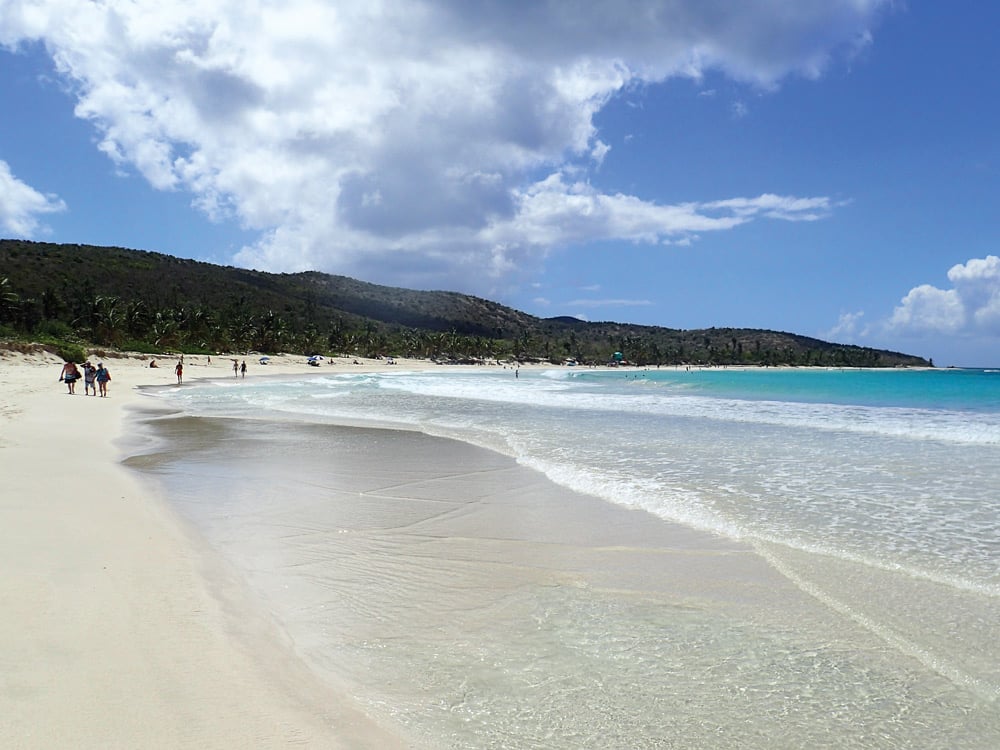
It happened to be my birthday, and that evening, Lily and Maddy made a merry time of it by decking me out in party finery that they brought for the occasion. It was the first of two birthdays aboard; Andrew would celebrate his on Thursday.
Tuesday was the third day of our sailing vacation, and we still hadn’t gone for a sail, a problem we planned to resolve after lunch. But first, we hiked to El Faro, a relatively easy 20-minute walk. Atop the hill the views of Culebra, St. Thomas and the reefs to the south were nothing short of breathtaking.
We capped off a perfect afternoon with a walk along the beach and across rocks to The Baths, which are tide pools on the northeast side of the anchorage.
Later, we followed our GPS track back past the reef at the bay’s entrance and hoisted the main. Conditions were perfect for a long beam reach in deep water across to the north shore of St. Thomas and back. The breeze built throughout the afternoon, from about 12 knots to a very sporty 20-plus before we returned and grabbed the same mooring for another night. We capped off a perfect afternoon with a walk along the beach and across rocks to The Baths, which are tide pools on the northeast side of the anchorage where ocean swells pound through holes in the boulders in a splash of foam and bubbles.
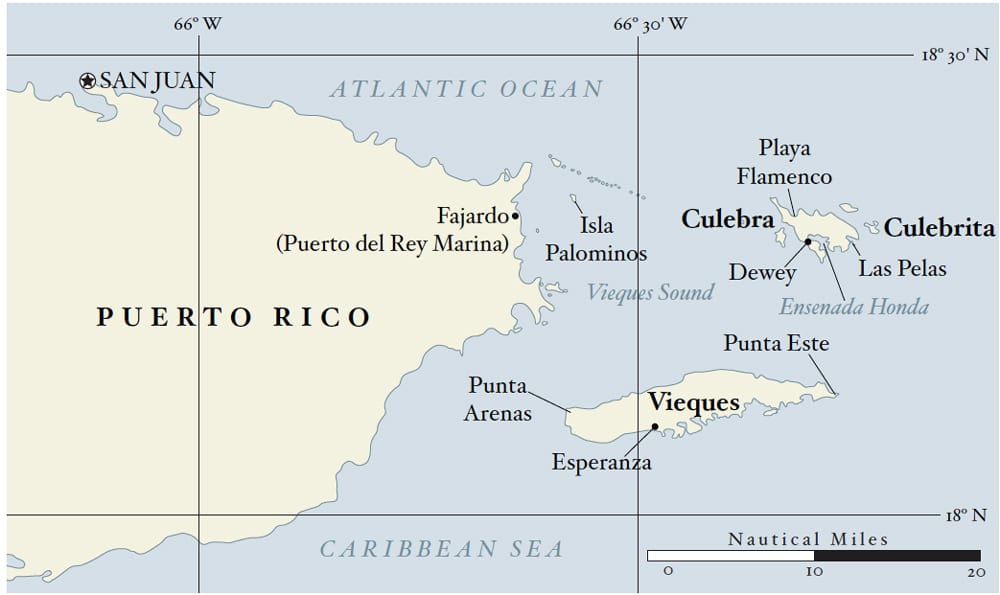
Bright and early Wednesday, we set off for Ensenada Honda, Culebra’s deep and protected harbor. Along the way we stopped at Puerto Manglar, a lovely bay lined with villas. Inside it, we followed a tight channel close to shore to pick up a mooring and go snorkeling on the shallow reef at Las Pelas. We stopped again for lunch at Ensenada Dikity, an anchorage behind the reef at the entrance to Ensenada Honda, and from there, continued in and anchored just off the town dock in Dewey.
Every cruising guide we picked up recommended cocktails at Mamacita’s, located on the narrow canal that runs from Ensenada Honda to Bahia Sardinas, on Culebra’s west coast. When in Rome…
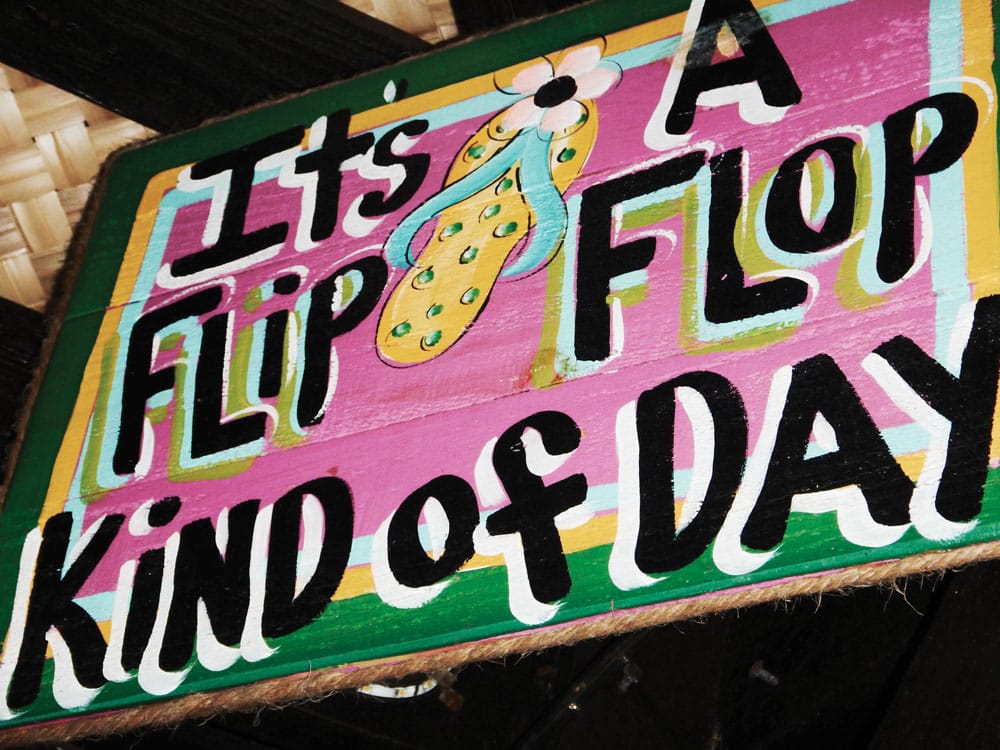
Dave and I hit the store across the canal from the restaurant for ice and a birthday cake for Andrew, dropped the supplies at the boat and then joined Team Azulita on Mamacita’s waterfront deck. The bushwackers were as good as advertised, topped only by the sunset we were treated to on a dinghy ride afterward.
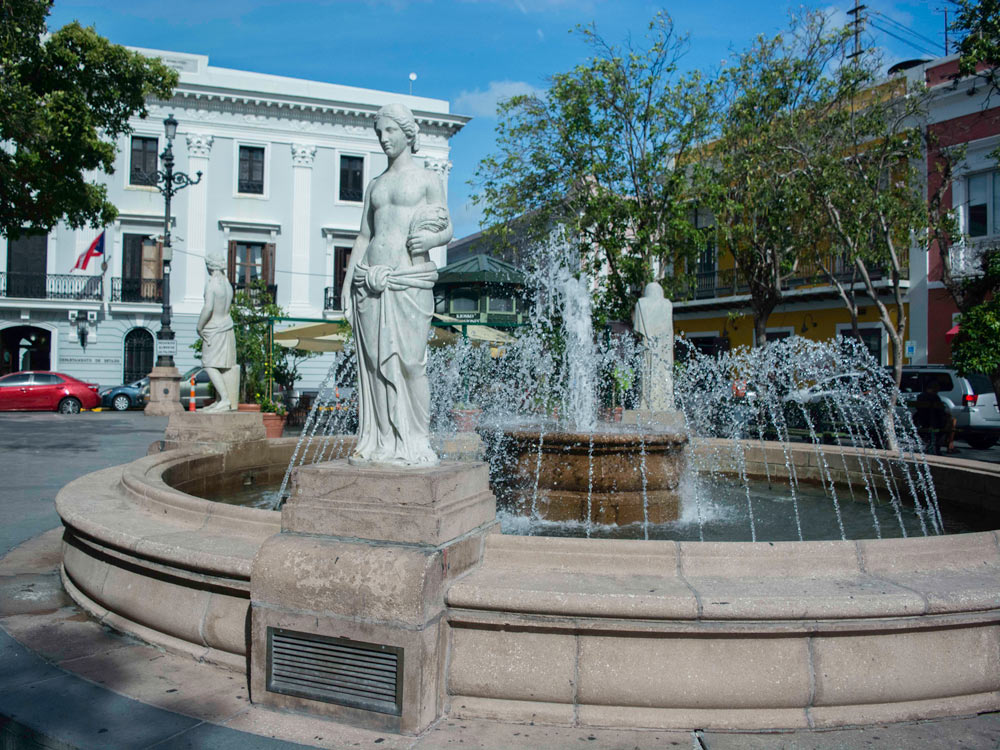
Thursday was our day to knock off some miles. We were headed for Vieques, the southernmost of the Spanish Virgins. We had a 10-mile, three-tack sail across open water, and then another 10-mile reach west along the island’s coast. With more time, we could have easily visited any number of small, inviting bays, but instead, put in a waypoint just off the village of Esperanza, the main town on the south coast, where we anchored for the night.
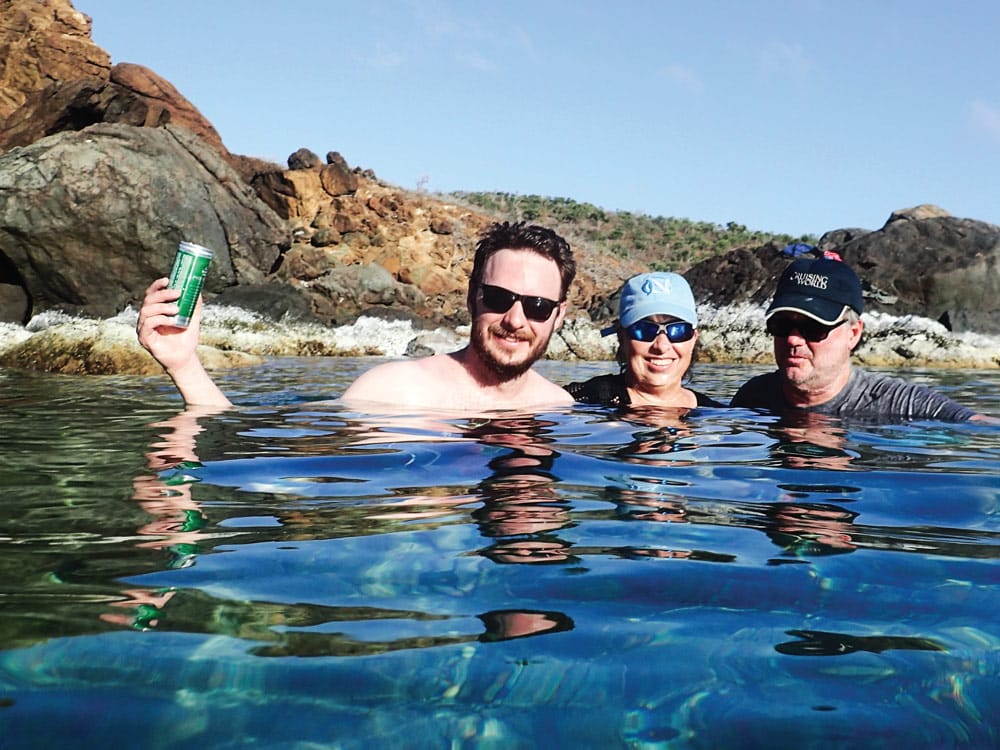
Between passing rain showers, we headed to town and locked the dinghy to a pier not far from the malecon, a broad seawall and sidewalk on the main street. We found a handful of small hotels and restaurants across from the beach, and we paid a visit to the local museum for a glimpse of the island’s past. We walked the length of the sleepy downtown and then into the neighborhood behind. The streets were lined with modest homes, some seemingly piled on top of each other, but many with large fenced-in yards and well-tended gardens. Dogs and chickens were everywhere.
The snorkeling between the boat and the beach was the best we encountered, with loads of tropical fish and a turtle or two swimming in about 10 feet of water.
We arrived back on the waterfront just in time for happy hour at Bananas, where we took a table in the back under ceiling fans in the shade. Our waitress, Leah, was from Buffalo, N.Y. She had come to Vieques three years earlier for a vacation and discovered island life suited her. Back in Buffalo, she quit her job, packed her belongings and returned south — all with no regrets.
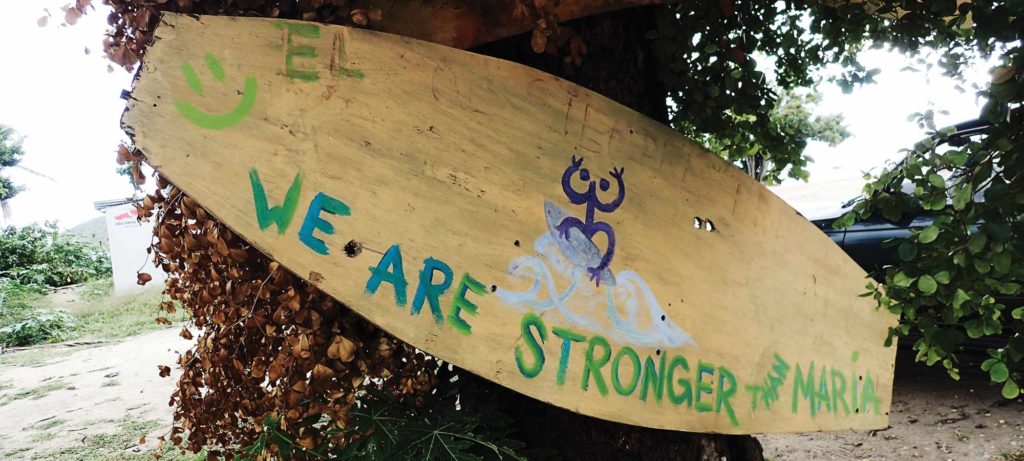
In laid-back Esperanza, the main town on Vieques’ south coast, the locals’ beach art made it pretty clear how they felt about Hurricane Maria, which dented but didn’t break the waterfront community.
The next morning, we moved on. Approaching the western end of the island, the mountains stopped abruptly and the shore was low-lying and covered with dense undergrowth where we anchored for breakfast just south of Punta Arenas. From there, we had about an 8-mile sail to get to our final stop at Isla Palominos, and we’d have the wind at our backs the entire way. What’s not to like about that?
We ran west to clear the reef that extends from the end of Vieques, then jibed and reached due north, seeing only one other boat the entire way.
Palominos is a private island, used by a resort on the mainland to entertain its guests. There are mooring balls along its northwest shore, though, and visitors are welcome on a portion of the white sand beach. The resort was closed when we visited, but was expected to open again soon.
The snorkeling between the boat and the beach was the best we encountered, with loads of tropical fish and a turtle or two swimming in about 10 feet of water. Lily, Maddy and I walked along the beach where a couple of local powerboats were anchored, their crews standing and floating in waist-deep water enjoying lively tunes and drinks on a hot afternoon. We sat for a spell and enjoyed the sun ourselves, until a rooster chased us off his turf.
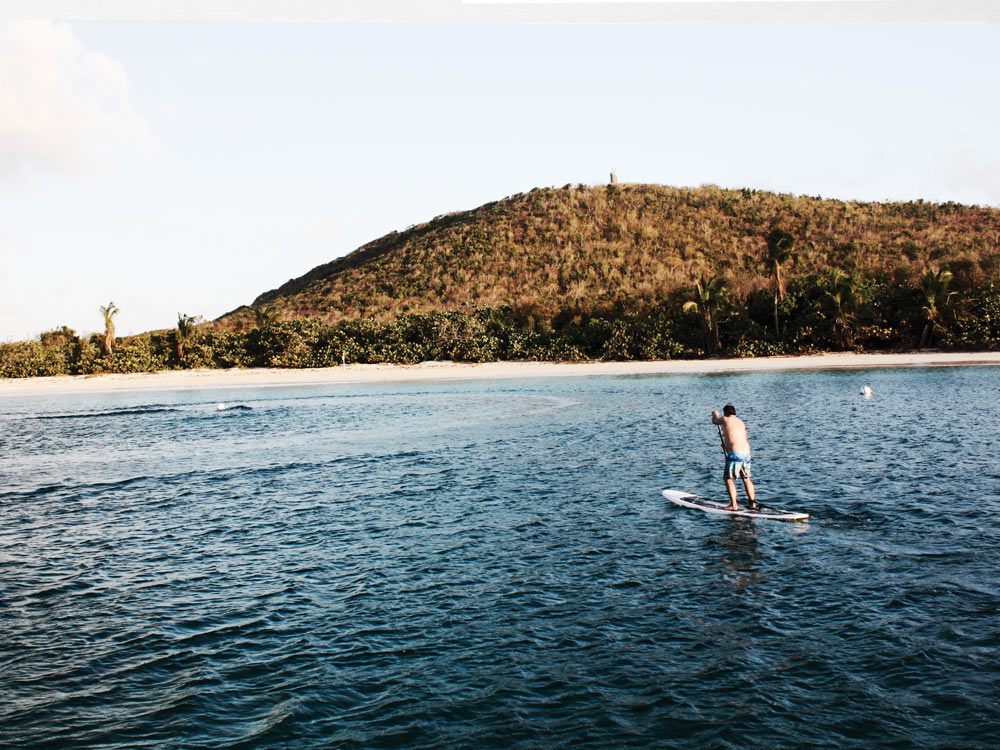
That evening a powerboat arrived and unloaded visitors at a party in a building overlooking the anchorage, but out on the water, we had the place to ourselves. We watched the last glimmer of light disappear behind the cloud-shrouded mountains on Puerto Rico. What a week it had been. Fine sailing, great company, remarkable islands — I could have easily spent a week or more exploring any one of them, and come away feeling it was a sailing vacation well spent. They really shouldn’t be missed.
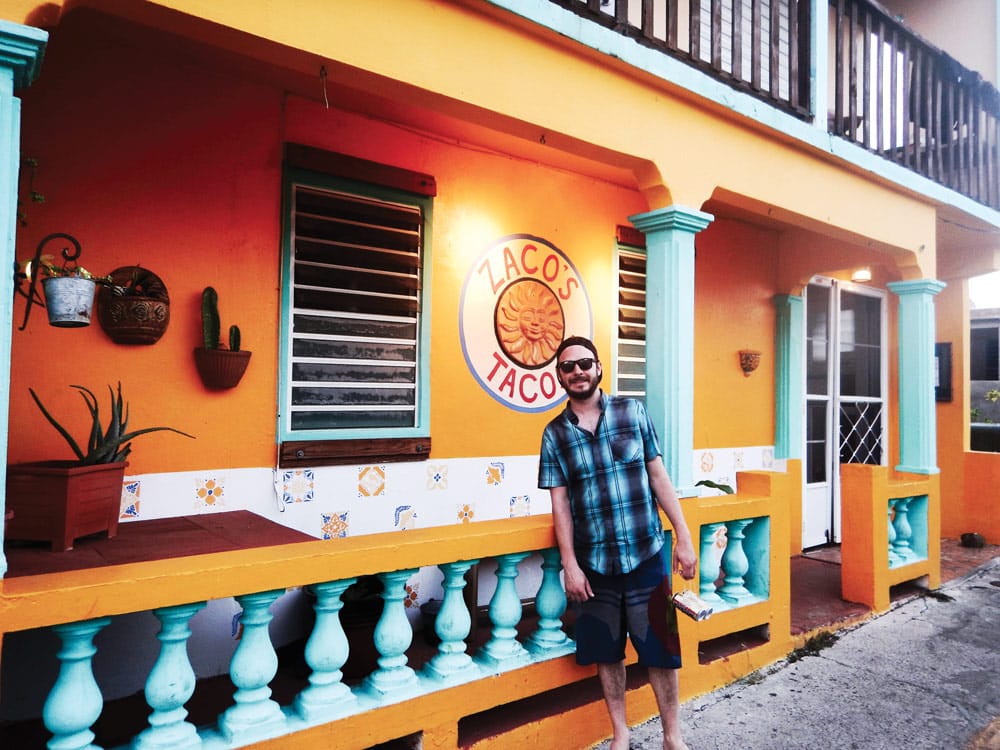
But all good things must end, and our time in the Spanish Virgins did the next morning, when we reluctantly made our final 45-minute return voyage to the base. It was one last chance to take in the towering peaks of the Puerto Rican mainland and a memorable ending to a trip I’ll not soon forget.
Mark Pillsbury is CW’s editor.
If you go
For U.S. citizens, traveling to Puerto Rico and the Spanish Virgin Islands is as simple as buying a ticket and climbing on a plane. The islands are a U.S. territory, so there’s no need to clear in or out when you arrive in San Juan.
Transportation from the airport to the marina and back was arranged through Sail Caribe. The fee for four passengers, including an hour stop for provisioning was $90 each way; additional passengers were $20 each.
Sail Caribe Yacht Charters has been in Farjardo, Puerto Rico, since 2005, and recently opened a second base in American Yacht Harbor on St. Thomas. Sail Caribe is also an ASA Sailing School; its sister company, Atlas Yacht Sales, is the area’s Lagoon Catamarans and Jeanneau dealer, and those brands make up Sail Caribe’s bareboat and crewed charter fleet.
Many of the available cruising guides focus just on the U.S. and British Virgin Islands, but A Cruising Guide to the Virgin Islands, by Steven J. Pavlidis (Seaworthy Publications), includes the Spanish Virgin Islands and proved quite useful.
Ralph’s Food Warehouse in Fajardo is a large and well-stocked grocery and liquor store, comparable to what you would find in any U.S. city. We did our main provisioning there. In Dewey, on Culebra, we also found markets to top off stores as needed.








